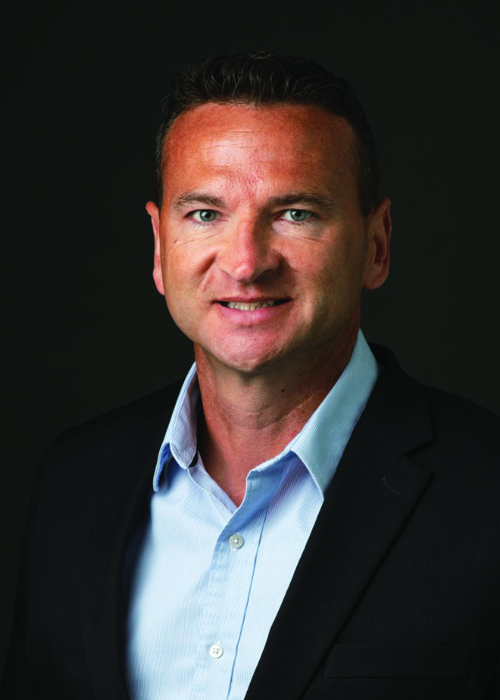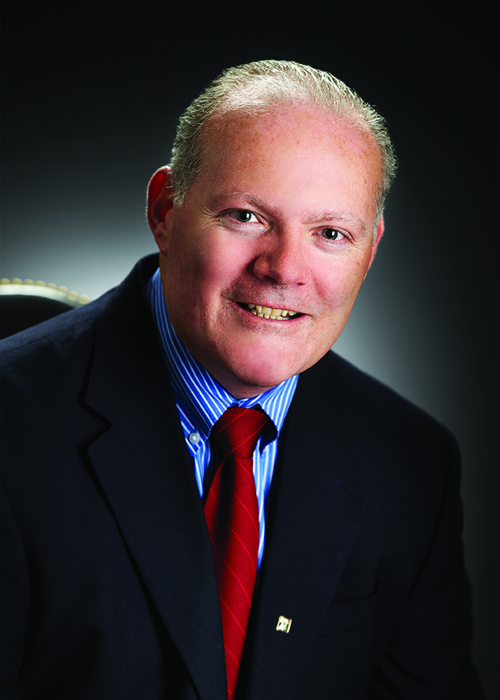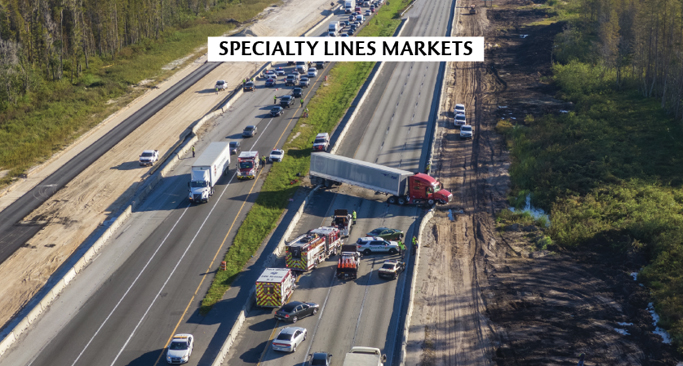Will the tough times never end?
By Joseph S. Harrington, CPCU
Here are headlines from a search engine for the past seven years. Pick any one you want, since they all still apply:
- “Commercial Auto Insurance Underperformance Drags On”
- “Commercial Auto Insurance Remains a Loser on the Whole”
- “Commercial auto drags on property-casualty insurance”
- “Chronic Commercial Auto Insurance Underwriting Losses”
- “US commercial auto still struggling”
- “US commercial auto underwriting losses persist”
It’s as if the commercial auto insurance market defies the laws of economics. How can a line continue to report such grim operating results for so long? At some point don’t losses and pricing have to reach some state of equilibrium?
According to Fitch Ratings, commercial auto insurance has experienced a combined ratio less than 100 in only one of the past 12 years. The ratio came in at 99 in 2021, aided by a backlog of court proceedings following the pandemic. The commercial auto combined ratio went back up in 2022 and is projected to exceed 105 for 2023.
Sustained underwriting losses arise not only from long-tail liability coverage, where elevated interest rates may help shield the impact, but also from deterioration in short-tail physical damage coverage, where sharply increased costs for vehicle replacement and repair have almost eliminated underwriting profit.
“Commercial auto results continue to fall on the wrong side of profitability,” says Mark Gallagher, national transportation practice leader of RPS. “Loss costs continue to rise on auto liability and auto physical damage, as costs of labor and parts continue to rise.
“Most providers are still looking to get more rate on their book of business.”
For some, it’s “insane”
Add rising jury awards to rising repair costs, and you see commercial auto carriers raising rates and reducing limits in anticipation of future increases in claim costs, says Mark Plousis, senior vice president of underwriting at Philadelphia Insurance Companies.

“Technology is an aid to the underwriting of a risk but cannot at this time replace the core ingredients that go into pricing an insured.”
—Richard Bryant
President, Underwriting
Prime Insurance Company
“We’re seeing pricing increases greater than 10% on primary policies and 15% for excess layers,” he says. “We’re also seeing increases in deductibles to combat the rising repair and replacement costs, and a decrease in available limits in excess of $1 million.”
For some insureds, the situation is “insane,” says Alex Zardeneta, a broker with R.E. Chaix & Associates, based in Irvine, California. “Liability and physical damage markets are either dropping these lines of business, tightening their underwriting guidelines even more than they already have, and/or increasing rates—in some cases up to 25%.”
Whereas insureds typically purchase coverage to suit their operations, Zardeneta sees motor carriers modifying their operations to adjust to insurance market conditions. “We are seeing many insureds change their radius of operations from long-haul to local,” he says “Also, some insureds are using box trucks instead of tractors to travel long haul.”
The stress on shippers and motor carriers extends to cargo insurance, as well.
“We are seeing more contractual requirements for higher cargo limits, which are especially tough on new ventures,” says Zardeneta. “In some cases, we are providing excess cargo coverage to help the insureds comply with contractual insurance requirements. We emphasize with retail agents that insureds need to park their vehicles in fully gated and secured locations and not on open streets.”
Finding drivers
Under all conditions, drivers are the number one risk factor in commercial auto insurance, and the recruitment and retention of qualified drivers remains a primary concern of shippers and motor carriers.

“It’s a huge challenge
for insureds to obtain experienced and reliable drivers. There aren’t many drivers with the clean driving records and/or experience required by some carriers.”
—Alex Zardeneta
Broker
R.E. Chaix & Associates
“Whether it’s outward-facing or inward-facing cameras, or trailer tracking devices, advances in technology are used to coach and train drivers to mitigate risks and exposures.”
—Mark Gallagher
National Transportation Practice Leader
Risk Placement Services

“It’s a huge challenge for insureds to obtain experienced and reliable drivers,” Zardeneta says. “There aren’t many drivers with the clean driving records and/or experience required by some carriers. Some insureds are forced to hire drivers with licenses from other countries, which many carriers will not accept.”
While the driver shortage persists, it may have eased somewhat from what it was just a few years ago, at least for large fleet operations with extensive training programs.
“Hiring good, experienced drivers is a little easier now given the changes in the industry,” says Richard Bryant, president of underwriting for Prime Insurance Company. “As we write new drivers, we are less concerned than other carriers might be, but we do surcharge for them.”
“Driver pay is only one factor in maintaining an experienced and reliable driver force,” says Gallagher. “The culture of the organization—knowing that everyone is valued—is equally important.”
Telematics impact
Respect for drivers will only grow in importance as driver surveillance and scrutiny play an ever greater role in vehicle telematics, the automated systems used to monitor vehicle performance. Vehicle telematics systems now commonly include “inward-facing” cameras that record what a driver is doing at all times behind the wheel.
“Having cameras that face outward and inward can help determine who is at fault for an accident,” says Bryant.
“Suppose you have inward-facing cameras but you do not monitor driver behavior,” he says. “Suppose you knew your driver was texting and looking at his phone, but there is no record that you did anything about it.
“The video evidence could be turned against you and be catastrophic in a court room.”
Gallagher says, “Whether it’s outward-facing or inward-facing cameras, or trailer tracking devices, advances in technology are used to coach and train drivers to mitigate risks and exposures. The data collected from electronic logging devices is invaluable.”
As an example, Philadelphia Insurance Companies provides its PHLYTRAC vehicle telematics program to its commercial auto customers. According to Plousis, accounts using PHLYTRAC have seen a 12% decrease in loss experience. “It has helped stabilize loss trends, combat social inflation, and keep rates manageable,” he says.
According to a report from The National Alliance for Insurance Education & Research and SambaSafety, nearly two-thirds of commercial auto insurers have implemented telematics-based risk monitoring in some form, with about a third planning to implement a “usage-based insurance” (UBI) product in the near future. Usage-based insurance rates coverage directly on how much insured property is used.
Zardeneta believes more and more insurers will require their commercial auto clients to utilize vehicle telematics for all the reasons stated above, and to identify intentional fraud claims.
Not a panacea
Technology works wonders in our day and age, but it does not have the last word on the quality of a risk. The human element is still indispensable, both for providers and buyers of insurance.
“Technology is an aid to the underwriting of a risk but cannot at this time replace the core ingredients that go into pricing an insured,” says Bryant. “We seek to educate insureds that shopping for price is not the best strategy.”
For example, “we know what it costs to handle a claim and we price accordingly,” he adds. “If someone is doing it cheaper, it typically means they will take your money, and when something happens, they will cancel you.
“The insurance industry likes to look for accounts that never have losses, and when they do, they cancel those accounts,” Bryant continues. “That is a stupid strategy. We prefer to build partnerships, so when accounts experience losses, they come to realize that they are actually buying a policy for managing claims.”
“We’re seeing pricing increases
greater than 10% on primary
policies and 15%
for excess layers.”
— Mark Plousis
Senior Vice President, Underwriting
Philadelphia Insurance Companies

“Insureds can utilize risk control and loss mitigation services offered by numerous insurance providers,” he says. “Engaging with your providers regarding your equipment, drivers, and operations can help ensure that your coverage adequately addresses exposures.
“Also, most insurance carriers will tell you that reporting claims immediately allows them to respond rapidly and possibly mitigate the cost of a claim.”
For more information:
Philadelphia Insurance Companies
phly.com
Prime Insurance Company
primeis.com
R.E. Chaix & Associates
rechaixinsurance.com
Risk Placement Services
rpsins.com
The author
Joseph S. Harrington, CPCU, is an independent business writer specializing in property and casualty insurance coverages and operations. For 21 years, Joe was the communications director for the American Association of Insurance Services (AAIS), a P-C advisory organization. Prior to that, Joe worked in journalism and as a reporter and editor in financial services.






